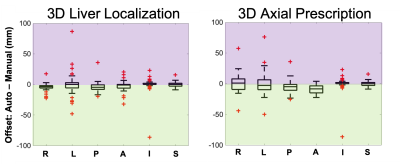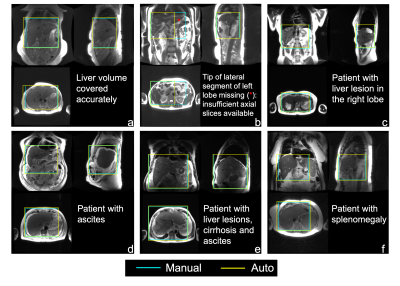Ruiqi Geng1,2, Mahalakshmi Sundaresan3, Jitka Starekova1, Collin J Buelo1,2, Nikolaos Panagiotopoulos1, Marcin Ignaciuk1, Thekla Helene Oechtering1, Scott B Reeder1,2,4,5,6, and Diego Hernando1,2
1Radiology, University of Wisconsin-Madison, Madison, WI, United States, 2Medical Physics, University of Wisconsin-Madison, Madison, WI, United States, 3Electrical and Computer Engineering, University of Wisconsin-Madison, Madison, WI, United States, 4Medicine, University of Wisconsin-Madison, Madison, WI, United States, 5Emergency Medicine, University of Wisconsin-Madison, Madison, WI, United States, 6Biomedical Engineering, University of Wisconsin-Madison, Madison, WI, United States
1Radiology, University of Wisconsin-Madison, Madison, WI, United States, 2Medical Physics, University of Wisconsin-Madison, Madison, WI, United States, 3Electrical and Computer Engineering, University of Wisconsin-Madison, Madison, WI, United States, 4Medicine, University of Wisconsin-Madison, Madison, WI, United States, 5Emergency Medicine, University of Wisconsin-Madison, Madison, WI, United States, 6Biomedical Engineering, University of Wisconsin-Madison, Madison, WI, United States
AI-based automated prescription for liver MRI was demonstrated in a wide variety of clinical datasets, with the potential to advance the development of fully free-breathing, single button-push MRI of the liver.

Figure 5. Accuracy of 3D liver localization and axial prescription, including the 6 edges: right (R), left (L), posterior (P), anterior (A), inferior (I), superior (S). Positive (negative) values, ie: purple (green) shading, indicate missing (excess) volume in the automated localization. Whole-liver coronal and sagittal prescription accuracy is similar to axial (not shown due to the additional considerations for coronal/sagittal S/I coverage). S/I coverage shows better accuracy than R/L coverage, possibly due to lower signal in the left lobe and complex anatomy.

Figure 3. Detection of the liver in each
localizer orientation across several patients. a) In most cases, the liver volume was covered accurately by automated
prescription. b) Missed coverage in the tip of the lateral segment of the left lobe due to insufficient axial localizer slices. The automated prescription aligned well with the manual annotation
in patients with focal lesions (c), ascites (d), and/or cirrhosis (e). f) In
patients with splenomegaly, the spleen abuts the liver and its signal level is
close to that of liver, but the proposed method was able to select only the
liver.
